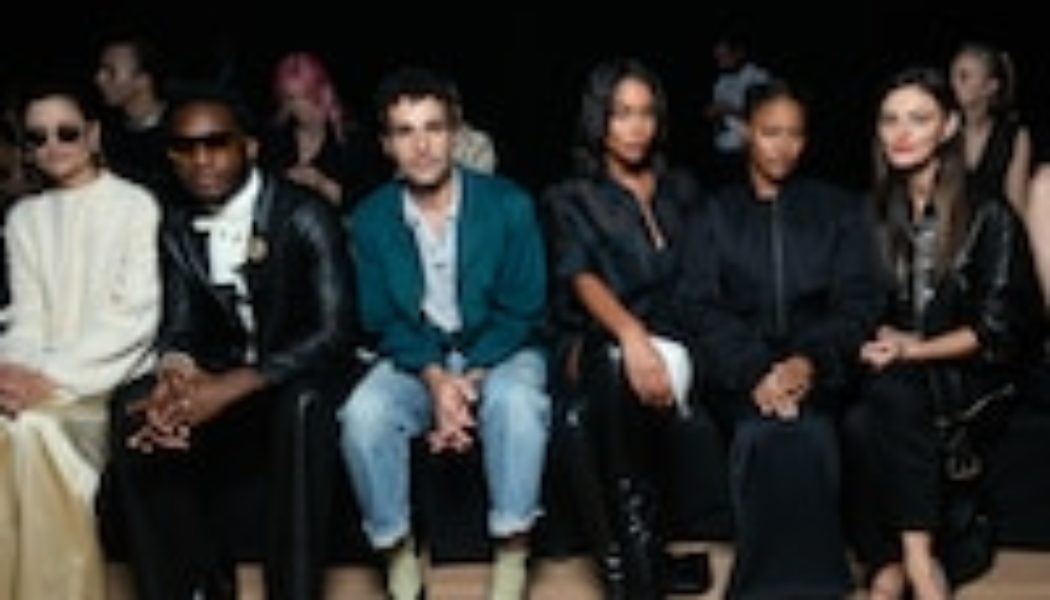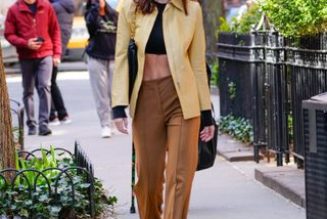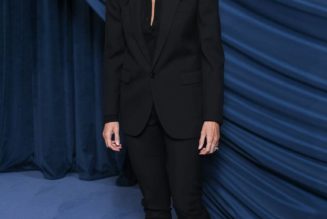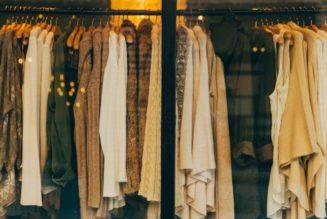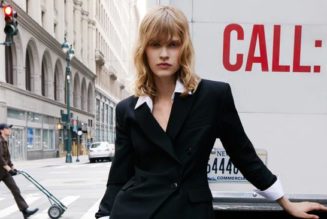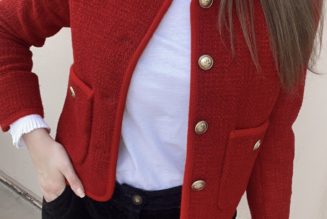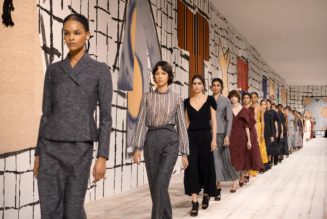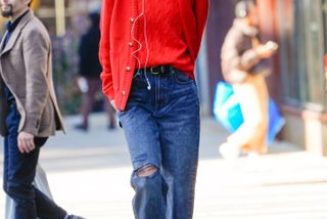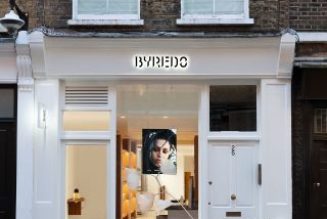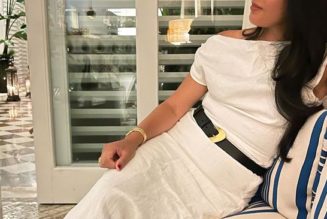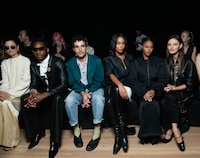
If you’re following New York Fashion Week through TikTok, you’re witnessing an alternative reality.
Influencers with hundreds of thousands of followers are posting “get ready with me”/#GRWM and “a day in the life” videos taking viewers through events and fashion shows that aren’t on the official calendar, or even on the radar of most of the editors, journalists, retailers and celebrities cramming into the first, second and third rows at shows such as Ralph Lauren and Eckhaus Latta.
Chanel set up a pop-up in a Williamsburg diner to celebrate a new perfume, while Dior feted its Charlize Theron-fronted standby scent, J’adore, with a dinner at the Brooklyn Botanic Garden. Influencers went big on the controversial Victoria’s Secret fashion show. And they bragged about attending a Vogue party, co-hosted by a cosmetic injectables company, Xeomin, with Christina Aguilera as a special guest.
For those who still attend or observe New York Fashion Week to understand how ideas about beauty, privilege and identity are changing, these events are all but irrelevant. At most, they tell us what the fashion kingmakers — brands and media players — think about the power of the internet.
Only a handful of brands had big TikTok or Instagram influencers at their shows: Alix Earle attended Dion Lee, Danielle Bernstein and Tinx were among the crowd at Prabal Gurung, and Staud was chockablock with ring-light-haloed women posting about the vibes. But at the heavy-hitter shows, such as Tory Burch or Michael Kors or Proenza Schouler (or even spunky labels to watch, such as Area), they were nowhere to be found.
For their followers, that distinction may mean nothing: Getting dressed by Chanel in a borrowed Chanel suit (as Earle did) is still getting dressed by Chanel, even if it’s only to fete a perfume. And considering that Gen Z is spending record amounts of money on high-end beauty brands, this is savvy on behalf of the fashion houses. The question is whether the brands welcoming the influencers to their fashion shows are onto something other brands haven’t gotten yet, or merely hungry for exposure amid an ambivalent American fashion audience.
The divide is somewhat reminiscent of the gatekeeping and nail-biting during the early days of bloggers about a dozen years ago, then of Instagram influencers a few years later.
And yet we haven’t seen a moment like the 2009 Dolce & Gabbana show, when the brand put Bryanboy (Bryan Yambao), Tommy Ton, Garance Doré and Scott Schuman (of the Sartorialist) in its front row, elbow to elbow with Anna Wintour, or when Tavi Gevinson was asked to take off an enormous Stephen Jones hat in the front row of a Dior show just a year later because she was blocking the view of the runway.
The exception is Sofia Richie Grainge, who has 3.4 million TikTok followers and is Town & Country’s September cover star. She attended Ralph Lauren and warmly greeted the Proenza Schouler designers Jack McCollough and Lazaro Hernandez backstage. But there’s no je ne sais quoi at work here: Richie Grainge is a nepo baby, the daughter of Lionel Richie and sister of Nicole Richie, which means she grew up in a world of designer clothes and pop culture credibility. That is as close as we get these days to Truman Capote’s swans.
There is one brand, though, that exists as a kind of secret portal between the worlds of influencers and fashion industry insiders: Khaite. Launched by Catherine Holstein in 2016, the brand sells like hot cakes on Net-a-Porter and won the Council of Fashion Designers of America’s American womenswear designer of the year award in 2022, but it’s also a mainstay in content creators’ #GRWM videos and guides to old-money style, even though the clothes are trendier and darker than, say, the quiet kookiness of Loro Piana. (One TikToker said a Khaite bag she had coveted nearly sold out immediately after Richie Grainge had posted it.)
Holstein’s clothes, which she showed in a dramatically lit runway Saturday, are the stuff of #GRWM fantasies, designed to make a huge, cool statement online. The point is not the life lived in the dress — or the blouse or bag or bodysuit— but the effort and extravagant clothes and makeup routine that apparently make life worth living. The #GRWM video is the 2023 update to the mere selfie, designed to tantalize you rather than impress you with its perfection. It’s a vibe vignette.
Khaite is often described as a “cool-girl brand,” and that means something very specific online. It is not Miles Davis making us rethink chinos, or Jane Birkin inspiring us to chuck our wallets in basket bags, or Sinéad O’Connor telling us to think for ourselves. Influencers, especially on TikTok, where the mysterious algorithm rules, are expected not to show us something we’ve never seen before, but to create content that assures their followers that they’re in all the right places, checking off all the right aspirations. Sporty & Rich, which essentially makes merch that celebrates designer Emily Oberg’s mood board, is another exemplary brand. Its new campaign includes recreations of paparazzi photos of Carolyn Bessette-Kennedy. There’s no humor or commentary, which makes calling it an homage, rather than just a copy, a stretch.
Holstein’s runway was almost like her own #GRWM video: There was a big leather jacket with the outta-my-way shoulders that first appeared in Saint Laurent’s Fall 2023 show in February; there was the carefree arrogance of a white silk sleeveless dress by the Row; and there was a nod to the big gold accessories of Daniel Roseberry’s Schiaparelli in a belt clasped with two big hands.
Holstein’s clothes can look impractical: Her leather coats and duffel bags look heavy, and a sleeve she repeated throughout the collection is the shape and practically the size of a cumulous cloud. All I could think about was a woman out to eat at one of those restaurants where the music is nightclub-level loud, accidentally knocking over her friend’s espresso martini while trying to yell a compliment at her about how much fun she’s having. You know, the stuff outside the confines of vertical video.
But that isn’t the point. Khaite’s clothes embody the way most people learn about and consume fashion right now: They look terrific online — sexy and editorial and high fashion and cool — which, to this crowd, means minimalistic and, most of all, easy to digest. They lack the charisma of pieces from Alaia, Celine, Saint Laurent and the Row — brands whose designs the Khaite team appears to watch closely.
But on TikTok, as in this fashion week’s slate of events, influencers and their followers are less familiar with such brands. (Casey Lewis even posited in a recent edition of her newsletter, After School, that Gen Z will learn about brands such as the Row and Chanel because Richie Grainge posts about them.) Khaite can be shockingly expensive for clothes that are often viscose or polyester blends — though that’s increasingly common in the luxury world — and the fit, if you are above a Size 6, can be unforgiving. But the customer who’s learning about clothes online (and buying them without touching or trying them on first) simply might not know that or care.
(Notably, Holstein was also one of the first designers to clock that shopping in person can be an experience, or at least inspo for good content: Her store, which opened in February in SoHo and has a breathtaking skylight and coldly curved design, is one of the most incredible retail spaces I’ve ever seen.)
A fascinating foil to the extremely online emerged the next day, Sunday, with the runway debut of Paul Helbers’s Fforme. The designer has the pedigree that creative directors rarely have anymore: He once led menswear at the Row, he worked as the style director at Louis Vuitton men’s, and he got his start at Margiela. Minimalism is all the rage — it’s why people love the Row, Toteme and Khaite — but Helbers takes reduction to the level of art or even religion at Fforme, which he launched a year ago. Choosy stores such as La Garçonne, based in Tribeca, and A’maree’s, in California, stock it; rarely does it sit on the rack for long, even though a T-shirt starts at $500.
The idea behind Helbers’s clothing is in the name: It’s cut so that, although it may look like a blousy something or other on the hanger, on your body, it takes on a lively and elegant form. A T-shirt falls in a twist that can be pulled up loosely or down tautly; a rose-pink dress hugs the hips and gives at the waist. He uses just a handful of fabrics in each collection. (In this one, only seven.) His sizing is loose, designed so you decide what fit looks best.
In this collection, a jacket and coat had a reverse raglan sleeve, so the big rounded cut that typically makes a jacket puff out at the shoulder blade was on the front, and the back draped with a Cristóbal Balenciaga- or Brancusi-like curve. Another dress of complex pleats at the neck seems too simple but moves like the model is ensconced in a waterfall.
Who will notice such details? Certainly no one online, but the women buying these clothes, or aspiring to, aren’t ones catering to slews of followers. Haters who take in the collection on only their phones will say this just looks like Cos. But to the person for whom the construction of clothing is an obsession, who geeks out about old Yohji Yamamoto and Zoran, and who lives in the pursuit of elegance — these clothes are a dream. Helbers’s clothes are an exacting and very special achievement.
What a luxury it is to be offline. I don’t mean luxury like white sheets freshly ironed by housekeeping at the Ritz hotel, with a complimentary bottle of champagne. (Although doesn’t that sound nice?) Luxury means rarity, and these days, that means comfort, quality and time. Who has enough of any of those things? And who knows how to get them? Helbers seems to know. So does Phoebe Philo, who has teased her long-awaited comeback with a website that can only be described as 1.0. It looks digitally unsavvy, and knowing Philo’s exacting eye, that’s no accident.
Another show that sang luxury to me was Proenza Schouler’s, which was almost free of styling, with just a few fun bags and glove shoes.
Instead, you focused on the pretty lines of a sky-blue tank dress that ruched at the waist, or a springy black cocktail skirt with a sheer slip peeking out: light and intelligent clothes by designers who are there to help the customers who seek out their products, rather than hang trends like an albatross around a woman’s neck.
